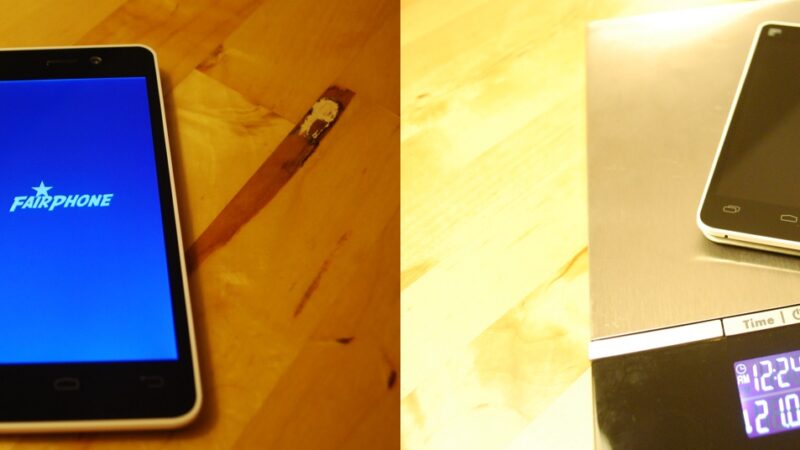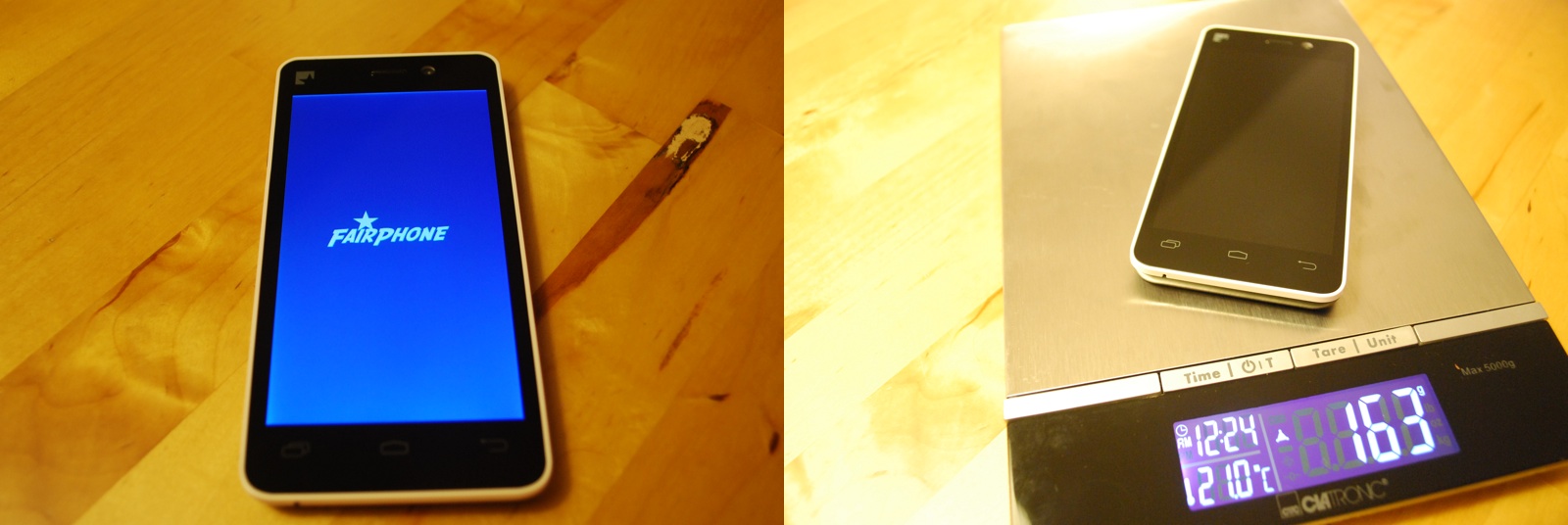Switching from iOS to Android (Fairphone) – Part 1

At the start of the summer I realised I needed to make some changes to the technology I use. This was motivated by my 2008 iMac, 2009 MacBook Pro, and 2009 iPhone 4S all not being as snappy and fast as they used to be. This led me to a series of reflections about the technology that I use, and what to do about it. I concluded I did not have enough money for new computers, so put a SSD drive into my MacBook Pro to speed it up (details on how to do this here – it’s highly recommended!), and will do the same to my iMac soon.
But what about the phone? Even the iPhone 6 that has just been released is not a major step forward. To all intents and purposes it’s a faster and larger iPhone 4S. So I started to look around for alternatives… My decision was to switch to Android, and – for ethical reasons rather than performance reasons – to buy a Fairphone. It is a middle of the range Android phone where parts and metals are fairly sourced, and workers treated fairly too – more about it here. The increasing lock-in enforced by Apple over its iOS devices was another reason to look elsewhere (this lock-in is not yet so pernicious on Mac OS).
The challenge then comes: how the hell do I, someone who has relied so heavily on Apple products for so long, some to terms with a new operating system? And, while I am at it, how do I avoid jumping out of the clutches of Apple and straight into the ever deeper clutches of Google (who are behind Android)? I have also made sure not to give Google my credit card details – I’ve used a €25 pre-paid card for the Google Play store to pay for the few apps that were not free.
Using Android initially is dire. Really dire. It feels illogical in comparison to iOS, and trying to work out how to even get the basics to work is not altogether straightforward. I managed to break the Google Play store with an update of the Fairphone skin for Android, and it took some while to work out how to get this working again. I’ve never broken the App Store on an iOS gadget… But with persistence, some anguished tweets, and some considerable assistance from some seasoned Android users (thanks @aprica and @evemassacre in particular, and some conversations offline), I’ve managed to make some considerable progress with the new phone, also to the point that I actually appreciate some of its features more than the iPhone already.
Here is what I have done so far:
 Browser
Browser
Rather than using the default, basic browser, or go for Google Chrome, I am using Firefox for Android. It’s fast and snappy, and has tabs, and pages render in an attractive way. All easy.
 Email
Email
This was more complicated. I have been using Gmail a long time, but due to my efforts to try to avoid bind-in to large tech firms, I signed up for an account with the German e-mail provider Posteo for €1 / month for 2Gb of disk space, and forwarded my main e-mail there. I am checking this using K-9 Mail on Android. The app is not especially polished, but it works well enough. Posteo also works very smoothly with Mac Mail on the MacBook and iMac.
 Messenger Apps
Messenger Apps
I have abandoned WhatsApp altogether, and now am using only TextSecure and Threema. TextSecure wins in terms of its security, and can handle regular SMS too, but the messenger features are basic. Threema is multi-platform and more developed.
 Twitter
Twitter
I used to swear by Tweetbot on iOS (and still use its Mac OS version), so seeking a solid and configurable Twitter client on Android was vital. Having looked at Plume and Fenix, I eventually settled on Twidere (with the additional Streaming extension). Twidere has masses of options to configure, and it took some time to get these right, but now it offers an excellent Twitter experience.
 Contacts and Calendars
Contacts and Calendars
I used to use iCloud to sync contacts and calendars between Macs and my iPhone, so a replacement was needed that ideally did not involve Google. The solution was to use the CalDAV and CardDAV sync functions provided by Posteo, and to use DAVdroid to sync these on the Android phone. Calendars and contacts then appear in the default Calendar and People apps. On the Macs, Calendar and Contacts have CalDAV and CardDAV support by default. It took a while to get the setup right, but now it works well.
 Notes
Notes
I could not find a way to easily sync notes from the Mac Notes app onto Android, so here the easiest solution was to replace the whole lot with Simplenote, and to install the apps for this on all devices. It works smoothly.
 Maps
Maps
I am not sure I am going to be able to entirely escape Google Maps, but I have installed GPS Navigation & Maps (that uses OpenStreetMap data), and even if this one is not good enough for everyday mapping, it is nevertheless useful as a turn-by-turn GPS, and also has a downloadable offline maps function.
Others
User experience with some apps is very similar, so I will not examine each of these, but they work: Facebook, Google+, Hangouts, Pocket, Tunnelbear, Flickr, Bambuser, TripIt, Foursquare, Swarm. None of these are going to make or break your Android experience.
So what’s left to do?
The basic functions on the phone now all work, and email, calendars, contacts and notes are all in sync. But a number of tasks remain outstanding, and I will cover those in a further blog entry. These are, in no particular order: PGP encryption for e-mail (I already use GPGTools on the Macs), file and music sync, photo sync, and also to find a way to do all of that without being reliant on Dropbox or Google Drive. I will try to accomplish this with an installation of ownCloud. More details to follow!
